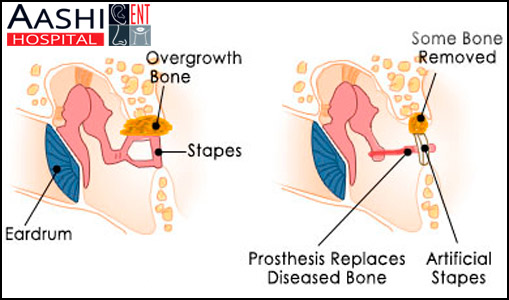Stapedectomy:Surgery, Procedure & Recovery
- Stapedectomy is an operation to treat hearing loss caused by otosclerosis, a hereditary condition which causes the stapes bone in the middle ear to fuse in place.
- The operation is performed under general anaesthetic and takes about 1 hour. You will usually have to stay in hospital overnight.
- A cut is made inside the ear canal so the eardrum can be lifted and the fused stapes bone removed. A tiny hole (about 0.5 mm wide) is drilled into the wall of the inner ear to hold the end of a replacement ‘bone’ of plastic or metal. The hole is sealed with a clot of blood, a piece of fat from the earlobe, or a patch of dissolvable dressing. The eardrum is replaced and finally a wick is placed in the ear canal for 1–2 weeks while the cut heals.

- After the operation, there is little discomfort, though it is common to feel slightly dizzy for 1–2 days. You will be able to return to work after about a week, but should avoid heavy lifting, diving and flying for 4–6 weeks.
- The operation results in a big improvement in hearing in 85% of cases. Approximately 10% of people get very little benefit from the operation, and in up to 5% of people it can cause a permanent complete loss of hearing in the operated ear. For this reason, some people choose to use a hearing aid instead of having the operation.
- The improvement in hearing is usually noticed as soon as the dressing is removed from the ear canal. In some cases, it may take a few days longer.

